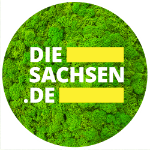Dresden Zoo can continue to build on a loyal fan base. After animal lovers donated almost three million euros for the orangutan house inaugurated last year, the planned expansion of the giraffe and zebra enclosure is also receiving a lot of support. So far, almost 80,000 euros in donations have been collected. The Friends of the Zoo Association intends to contribute 300,000 euros. The total investment is estimated at around 500,000 euros.
Director praises high level of solidarity between the population and the zoo
"There is a high level of solidarity between the population of Dresden and the zoo," said Director Karl-Heinz Ukena. In the past two years, the zoo has also received two legacies of 500,000 euros each. In addition to the enclosure for zebras and giraffes, the paths in the zoo grounds are now to be renovated and the petting enclosure renewed. 470,000 visitors came to the zoo in 2024. Revenue amounted to 5.8 million euros (2023: 4.9 million euros).
Last year, Dresden Zoo completed the largest investment in its history with the new orangutan house. The building cost 22 million euros. The zoo was founded in 1861 and is the fourth oldest German zoo after the facilities in Berlin, Frankfurt/Main and Cologne. It is home to more than 1,000 animals from over 200 species on an area of around 13 hectares in the Elbe city's Great Garden.
The number of animals was also confirmed in the current inventory. Newcomers to the zoo since 2024 include the smooth-coated otter, South African porcupine, puna duck and ruddy duck. Special breeding successes include gundis (African rodents), vicuñas, the sloth and the coiled-tailed skink. The skink, a lizard, is native to the South Pacific archipelago of the Solomon Islands and Papua New Guinea.
Dresden Zoo most popular cultural institution in the city according to survey
The skink was surveyed for the inventory in the same way as the Binturong species. Dresden's Mayor of Culture Annekatrin Klepsch (Left Party) also helped with this. She referred to a survey by the Technical University of Dresden, according to which the zoo is the most popular cultural institution in the Saxon state capital. "That speaks for their work and it also speaks for the tradition of this area," said Klepsch, thanking the 80 or so employees.
More additions and solar panels planned
The zoo is also set to get new residents this year. Two Nilgau antelopes, a caracal and two red pandas are planned as additions. The orangutan house and the Brandes house for the koalas, sloths and other exotic animals will be fitted with a photovoltaic system. This should save 15 percent of energy costs, said Ukena.
For now, however, the director is hoping that his zoo will be spared the foot-and-mouth epidemic. Precautions have been taken, he emphasized. Employees have been asked not to stay in the affected areas. No feed should be obtained from there either. The zoo's animal disease alert plan has been updated.
Copyright 2025, dpa (www.dpa.de). All rights reserved




